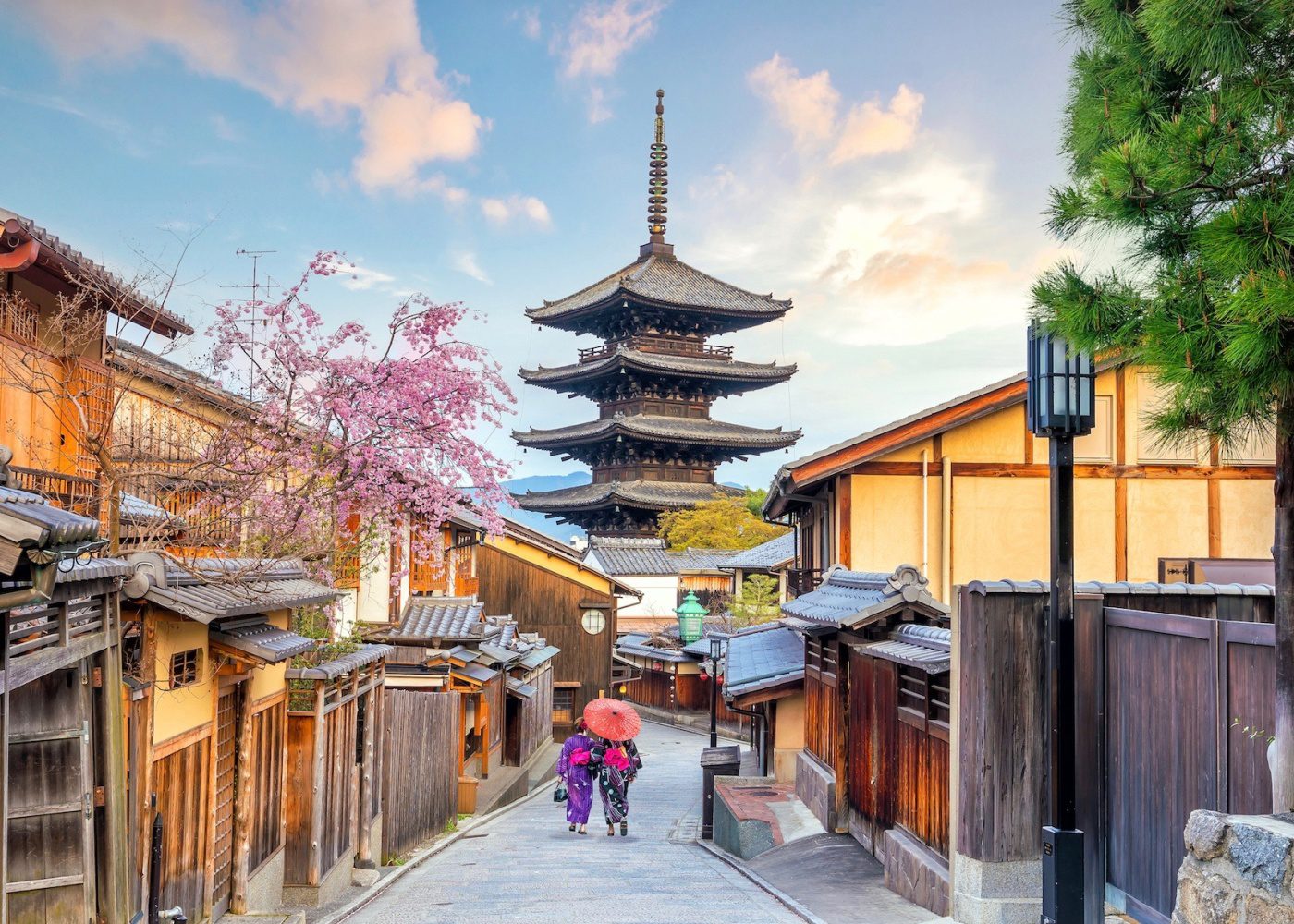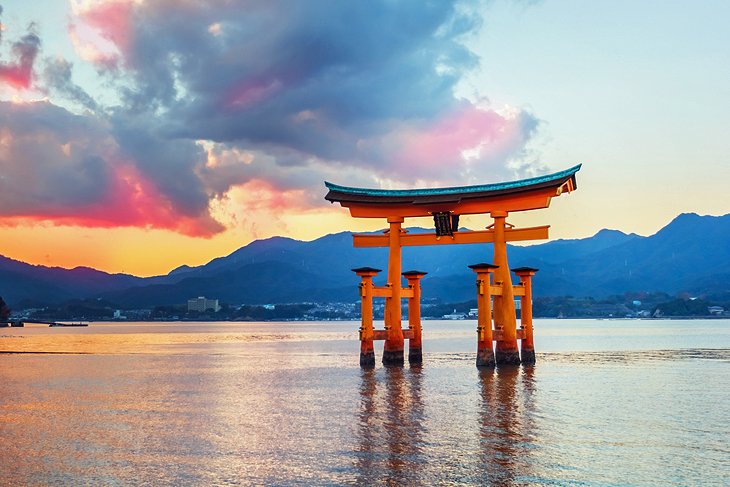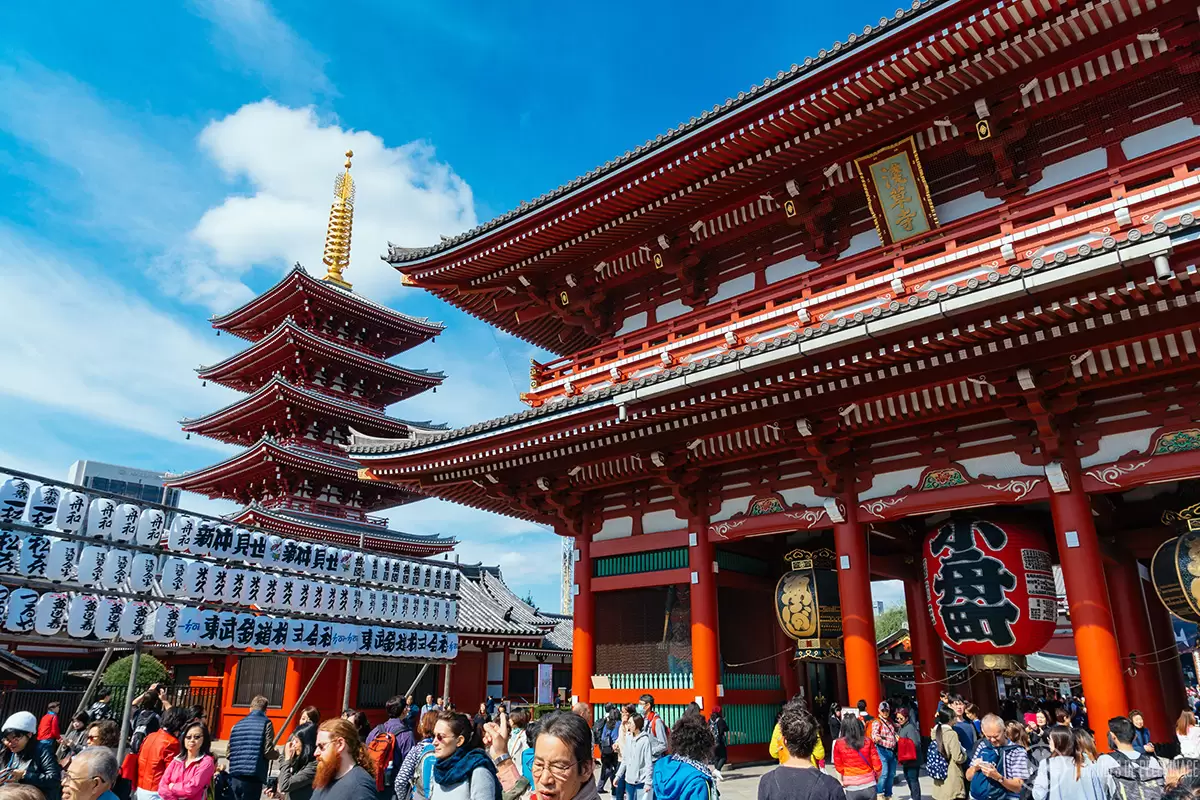
Japan, an archipelago nation where ancient traditions gracefully intertwine with cutting-edge technology, offers an unparalleled travel experience. From serene bamboo forests and ornate temples to neon-lit metropolises and the breathtaking beauty of Mount Fuji, the Land of the Rising Sun captivates the senses and nourishes the soul. This article delves into the heart of Japan’s allure, highlighting its most iconic attractions, offering insights into its rich history, providing practical travel tips, exploring accommodation and transportation, and guiding you on the best time to visit this extraordinary destination.
The Crown Jewels: Top Attractions of Japan
Japan’s appeal lies in its incredible diversity, catering to every traveler’s interest. Here are some of its most celebrated attractions:

Related Articles about Japan: A Tapestry of Tradition and Tomorrow – Exploring the Archipelago’s Top Attractions:
- Nepal: A Journey to the Roof of the World and Beyond
- Lombok: A Traveler’s Guide to Paradise Found
- Singapore: The Lion City’s Sparkling Embrace – A Comprehensive Travel Guide
- Singapore’s Golden Embrace: A Symphony of Luxury, Culture, and Unforgettable Stays
- Georgia: Where Ancient History Meets Breathtaking Landscapes
1. Mount Fuji: The Iconic Sacred Peak
No image is more synonymous with Japan than the majestic, snow-capped cone of Mount Fuji. This active stratovolcano, a UNESCO World Heritage site, is not just a geographical marvel but also a deeply spiritual symbol. While climbing Fuji is a popular activity during the official climbing season (July to September), many prefer to admire its serene beauty from afar.
- Must-See: The Fuji Five Lakes region (Kawaguchiko, Yamanakako, Saiko, Shojiko, and Motosuko) offers postcard-perfect views, especially during cherry blossom season or autumn. Hakone, a mountain resort town, provides art museums, hot springs, and boat cruises with stunning Fuji vistas.
2. Kyoto: The Heart of Traditional Japan
For those seeking the essence of old Japan, Kyoto is an indispensable destination. This former imperial capital is a living museum, boasting thousands of Buddhist temples, Shinto shrines, imperial palaces, and traditional wooden houses.
- Must-See:

- Kinkaku-ji (Golden Pavilion): A Zen Buddhist temple covered in shimmering gold leaf, reflected beautifully in its surrounding pond.
- Fushimi Inari-taisha Shrine: Famous for its thousands of vibrant red torii gates that wind through a forested mountain.
- Arashiyama Bamboo Grove: An ethereal pathway through towering bamboo stalks, creating a magical atmosphere.
- Gion District: Kyoto’s geisha district, where you might catch a glimpse of geiko (geisha) and maiko (apprentices) in their exquisite attire.
- Kiyomizu-dera Temple: A historic temple with a wooden stage offering panoramic views of the city.
3. Tokyo: A Metropolis of Contrasts
Japan’s vibrant capital is a dazzling blend of tradition and modernity. From the bustling Shibuya Crossing to the tranquil gardens of the Imperial Palace, Tokyo offers an endless array of experiences.
- Must-See:
- Shibuya Crossing: The world’s busiest intersection, an iconic symbol of Tokyo’s energy.
- Senso-ji Temple (Asakusa): Tokyo’s oldest temple, offering a glimpse into the city’s historical past.
- Meiji Jingu Shrine: A peaceful oasis dedicated to Emperor Meiji and Empress Shoken, nestled within a dense forest.
- Tokyo Skytree: A towering broadcast and observation tower offering breathtaking panoramic views of the city.
- Harajuku: The epicenter of youth culture and avant-garde fashion.
- Tsukiji Outer Market (or Toyosu Fish Market): For seafood lovers, a vibrant market experience.
4. Hiroshima and Miyajima Island: A Testament to Peace and Beauty
Hiroshima is a city reborn from tragedy, a powerful testament to resilience and a beacon of peace. Adjacent to it lies Miyajima Island, a place of profound natural and spiritual beauty.
- Must-See:
- Hiroshima Peace Memorial Park and Museum: A poignant and essential visit to understand the impact of the atomic bombing and advocate for peace.
- Itsukushima Shrine (Miyajima Island): Famous for its "floating" torii gate, which appears to float on the water at high tide. The island itself is a UNESCO World Heritage site, with wild deer roaming freely.
5. Nara: The Ancient Capital with Friendly Deer
Just a short train ride from Kyoto, Nara was Japan’s first permanent capital. It’s renowned for its large park where hundreds of friendly wild deer roam freely, considered sacred messengers.
- Must-See:
- Todai-ji Temple: Home to a colossal bronze Buddha statue (Daibutsu), one of Japan’s most famous landmarks.
- Kasuga Taisha Shrine: Known for its thousands of bronze and stone lanterns.
- Nara Park: Interact with the deer and explore its beautiful grounds.
6. Hakone: Art, Nature, and Fuji Views
This mountain resort town, nestled in the Fuji-Hakone-Izu National Park, is a perfect escape from the city. It offers a diverse range of attractions, from art museums to natural hot springs.
- Must-See:
- Hakone Open-Air Museum: Showcasing a stunning collection of sculptures amidst beautiful natural landscapes.
- Lake Ashi: Enjoy a scenic cruise on a pirate ship replica, with potential views of Mount Fuji.
- Owakudani: A volcanic valley with hot springs and sulfurous fumes, where you can try black eggs boiled in the hot springs.
7. Osaka: The Culinary Capital and Vibrant City
Known for its delicious food, lively atmosphere, and friendly locals, Osaka is a city that truly embraces enjoyment.
- Must-See:
- Dotonbori: Osaka’s vibrant entertainment district, famous for its dazzling neon lights, giant crab signs, and street food.
- Osaka Castle: A magnificent historical landmark offering insights into Japan’s samurai past.
- Kuromon Ichiba Market: A bustling market nicknamed "Osaka’s Kitchen," perfect for sampling local delicacies.
8. Nikko: The Elaborate Mausoleum of a Shogun
Nestled in the mountains north of Tokyo, Nikko is a UNESCO World Heritage site renowned for its opulent shrines and temples, set amidst breathtaking natural scenery.
- Must-See:
- Toshogu Shrine: The lavish mausoleum of Tokugawa Ieyasu, the founder of the Tokugawa Shogunate, adorned with intricate carvings and vibrant colors.
- Lake Chuzenji and Kegon Falls: Natural beauty surrounds Nikko, offering serene landscapes and impressive waterfalls.
A Glimpse into Japan’s Rich History
Japan’s history is a fascinating saga of evolution, from its prehistoric Jomon period to its modern-day status as a global leader. Key periods include:
- Ancient Japan (c. 14,500 BC – 1185 AD): Characterized by the development of distinct cultural periods like Jomon, Yayoi, and Kofun. Buddhism arrived in the 6th century, profoundly influencing art, architecture, and philosophy. The Heian period (794-1185) is considered a golden age of Japanese court culture.
- Feudal Japan (1185 – 1868): Marked by the rise of the samurai class and the establishment of shogunates. This era saw periods of civil war and unification, culminating in the Tokugawa Shogunate (1603-1868), a time of relative peace and isolation (Sakoku).
- Meiji Restoration (1868): A pivotal moment that ended the shogunate and restored imperial rule. Japan rapidly modernized, industrializing and expanding its influence.
- Imperial Japan and World War II (1931-1945): A period of militarism and expansionism, leading to Japan’s involvement in World War II.
- Post-War Japan: Following its defeat in WWII, Japan underwent a remarkable period of economic recovery and reconstruction, emerging as a major economic power.
Navigating the Land of the Rising Sun: Travel Tips
- Visa Requirements: Check the latest visa regulations for your nationality. Many countries have visa-waiver agreements with Japan for short stays.
- Currency: The Japanese Yen (JPY). Credit cards are widely accepted in cities, but it’s advisable to carry some cash, especially for smaller establishments or rural areas.
- Language: Japanese. While English is spoken in tourist areas and major hotels, learning a few basic Japanese phrases will greatly enhance your experience.
- Etiquette: Respect is paramount. Be mindful of customs like removing shoes indoors, bowing, and avoiding loud conversations on public transport. Punctuality is highly valued.
- Connectivity: Pocket Wi-Fi devices or local SIM cards are readily available and highly recommended for easy navigation and communication.
- Tipping: Tipping is not customary in Japan and can even be considered rude. Excellent service is expected.
- Food Safety: Japanese cuisine is generally very safe. However, if you have dietary restrictions, inform your server.
- Emergency Numbers: Dial 110 for police and 119 for fire and ambulance services.
Where to Rest Your Head: Accommodation Options
Japan offers a diverse range of accommodation to suit every budget and preference:
- Hotels: From international luxury chains to budget-friendly business hotels, you’ll find a wide selection in every city.
- Ryokan: Traditional Japanese inns offer an authentic cultural experience. Expect tatami mat rooms, futon beds, communal baths (onsen), and exquisite multi-course meals (kaiseki).
- Minshuku: Similar to ryokan but often family-run and more affordable, offering a more intimate glimpse into Japanese home life.
- Hostels: A great option for budget travelers, offering dormitory beds and private rooms.
- Capsule Hotels: A unique Japanese experience where you sleep in compact, capsule-like compartments.
- Airbnb/Vacation Rentals: Increasingly popular for longer stays or families seeking more space and self-catering facilities.
Seamless Journeys: Transportation in Japan
Japan boasts an incredibly efficient and punctual public transportation system, making getting around a breeze:
- Shinkansen (Bullet Train): The iconic high-speed rail network connects major cities with incredible speed and comfort. Consider a Japan Rail Pass if you plan on extensive inter-city travel.
- Local Trains and Subways: Extensive networks operate within cities, offering convenient and affordable travel. Stations are well-signed, often with English information.
- Buses: Complementary to trains, buses are useful for reaching areas not served by rail.
- Taxis: Readily available but can be expensive, especially in larger cities.
- Ferries: Essential for island hopping, particularly to places like Miyajima.
Japan Rail Pass: If you plan on traveling between multiple cities via Shinkansen, the Japan Rail Pass can offer significant savings. It must be purchased before you arrive in Japan.
The Perfect Season to Visit: Best Time to Go
Japan offers distinct beauty in each season, making it a year-round destination.
- Spring (March to May): Cherry Blossom Season (Sakura). This is arguably the most popular and visually stunning time to visit. The country bursts into a sea of pink and white blossoms, creating a magical atmosphere. Temperatures are mild and pleasant.
- Summer (June to August): Hot and humid, with a rainy season (tsuyu) typically in June. However, summer is vibrant with festivals (matsuri), fireworks displays, and opportunities for hiking in cooler mountain regions.
- Autumn (September to November): Fall Foliage (Koyo). The landscape transforms into a breathtaking spectacle of vibrant reds, oranges, and yellows. The weather is crisp and comfortable, making it another ideal time for sightseeing.
- Winter (December to February): Cold, especially in northern regions, with snowfall in many areas, making it perfect for winter sports. Cities like Tokyo and Kyoto experience cooler, crisp weather, and fewer crowds. The illuminations during this time are spectacular.
Recommendation: For a balance of pleasant weather and iconic scenery, spring (late March to early May) and autumn (October to November) are generally considered the best times to visit Japan.
Japan is a land that unfolds with every step, revealing layers of history, culture, and natural splendor. Whether you’re seeking ancient tranquility or futuristic marvels, this extraordinary archipelago promises an unforgettable journey that will leave you with a profound appreciation for its unique charm and enduring spirit.





